India, the land of various cultures and vibrant traditions is home to some highly venerated religious places that draw countless devotees and culture explorers around the globe. Those who want to experience the divine connection, spiritual enlightenment, and unique religious journey have many pilgrimage sites to visit in India.
Among all religious destinations, some hold exceptionally high reverence among the people, especially for their history, mythological significance, or location. In this blog, we will discuss the top 8 religious places to visit in India, which are either visited by most of the masses or have chief significance among Indians.
Each of these religious destinations combines devotional attractions with cultural richness and natural landscapes that span from Gujarat's Dwarka to Odisha's Puri. It also includes popular pilgrimage destinations like Ayodhya, Lord Ram's birthplace, Kedarnath, the most sought-after Shiva Temple, and Varanasi, the deeply integrated spiritual destination, which recently became the most visited religious destination in India.
Cities located beside the holy rivers like Rishikesh near Ganga, Mathura Vrindavan near Yamuna, and Badrinath near Alaknanada.

This list of top spiritual destinations in India has places from the most religious circuits in Hinduism like Char Dham Yatra, Panch Kedar Yatra, and Sapta Puri Yatra. More than destinations, these ten Indian religious sites are the best places to travel and find a meaningful transformative experience that grants peace, spiritual understanding, and blessings.
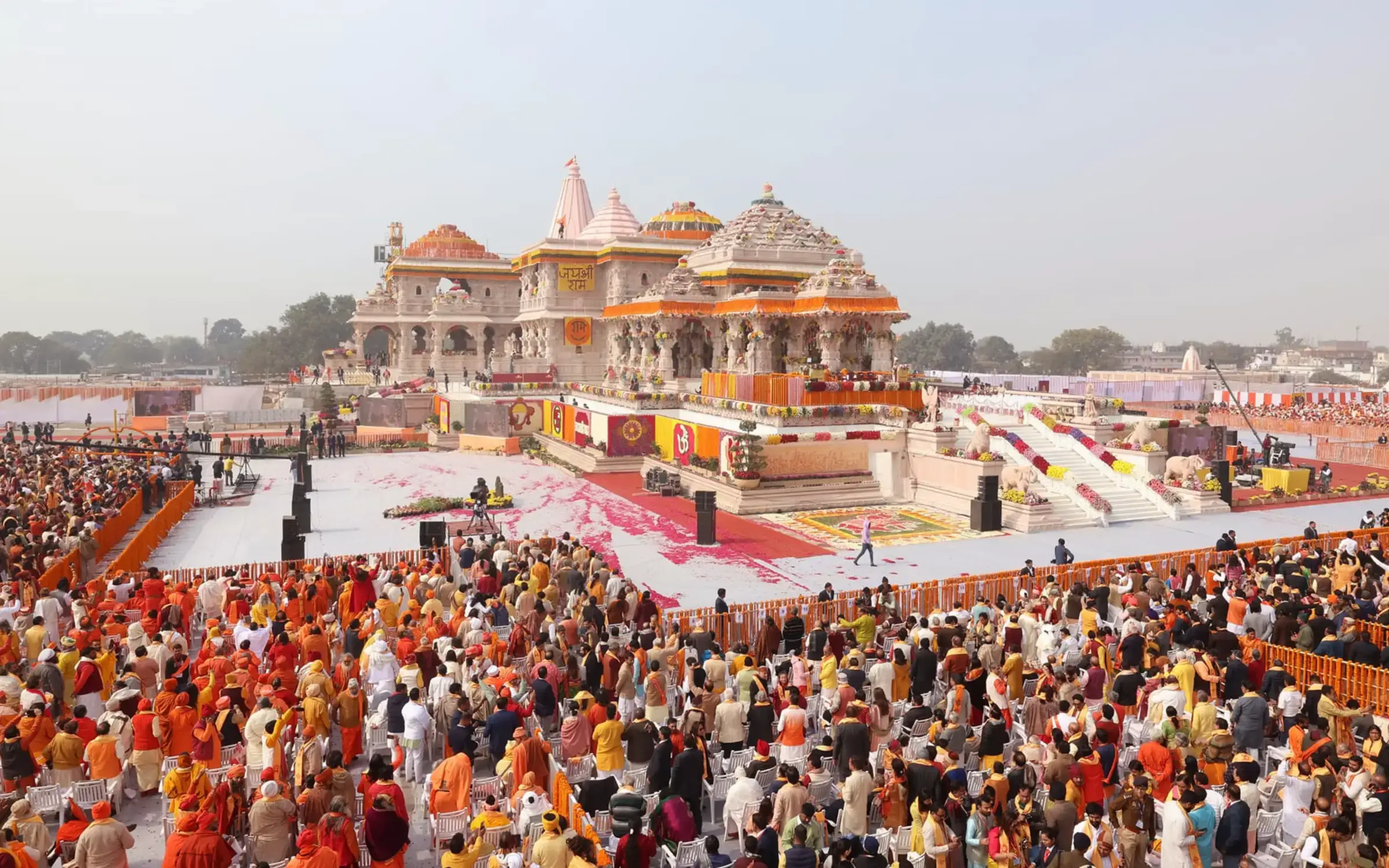
Ayodhya, one of the seven most important pilgrimages called the sapt puris in India, has also recently become one of the top tourist places in India. A considerable credit to the Shree Ram Janmabhoomi Mandir, which was consecrated recently in 2024 and houses the alluring Ram Lalla's idol. Though in fact, Ayodhya has gained expansive popularity recently, it has been among the best religious places to visit in India for ages. Ayodhya is the birthplace of one of the most influential Gods in Hinduism, Lord Ram, who are revered for their righteous nature, virtue, loyalty, and heroic deeds. The city is the epicenter of the Hindu epic Ramayan and thus holds an immense religious and spiritual atmosphere.
Located on the banks of the Saryu River, Ayodhya is also a sacred destination for the followers of the Jain religion. It is the birthplace of five Jain Tirthankaras, including the first Tirthankara and the founder of Jainism, Rishabhdev.
For religious travelers, Ayodhya has several other revered temples like the Hanuman Garhi Temple, dedicated to Lord Ram's loyal devotee Shri Hanuman, and Kanak Bhawan Temple which was a palace gifted to Lord Ram's consort Goddess Sita after marriage.
Moreover, Ayodhya is also known for celebrating festivals like Ram Navami and Deepotsav (Diwali) in an unparalleled grand way which tourists from around the globe come to witness. The history, mythology, and spiritual experiences in Ayodhya make it the core city of religious and spiritual tourism in India.

A very popular name among travelers in India, Rishikesh is a quaint escape sitting at the edge of the Himalayas. Lush, serene, and highly revered, Rishikesh is always on the list of famous holy places in India. Situated on the banks of the sacred Ganges this enchanting city serves as both the "Gateway to the Garhwal Himalayas" and the "World Capital of Yoga" while uniting spiritual traditions with mythological heritage and stunning natural landscapes. There are many Ashrams, temples, and religious centers in Rishikesh where devotees, religious people, and spirituality seekers come from every corner of the world. You will witness Vedic hymns echoing through the air and the scent of incense mingling with the cool breeze from the Himalayas, creating an atmosphere of peacefulness throughout the area.
According to the Skanda Purana Rishikesh obtained its name from Lord Vishnu who appeared as 'Hrishikesh' to bless Raibhya Rishi after his penance. The city's religious importance grows stronger because Lord Rama performed penance here to cleanse his soul from the Brahmahatya, the sin of killing Ravana. The famous iron suspension bridge known as Lakshman Jhula stands at the location where Lakshmana used a jute rope bridge to cross the Ganges.
Visitors on a religious tour in India coming to Rishikesh should also see the three main religious sites, the Neelkanth Mahadev Mandir which honors Lord Shiva's Samudra Manthan poison drinking act, the Bharat Mandir founded by Adi Shankaracharya, and Triveni Ghat where people gather for Maha Aarti.
Rishikesh serves as the main entry point for some of the most popular Hindu pilgrimage sites in India and Char Dham temples of Uttarakhand which includes Badrinath, Kedarnath, Gangotri, and Yamunotri. The global recognition of "World Capital of Yoga" was earned by Parmarth Niketan alongside its ashrams and yoga centers which attract seekers from worldwide locations. Through holy chants and meditation practices, visitors discover both self-realization and inner peace.
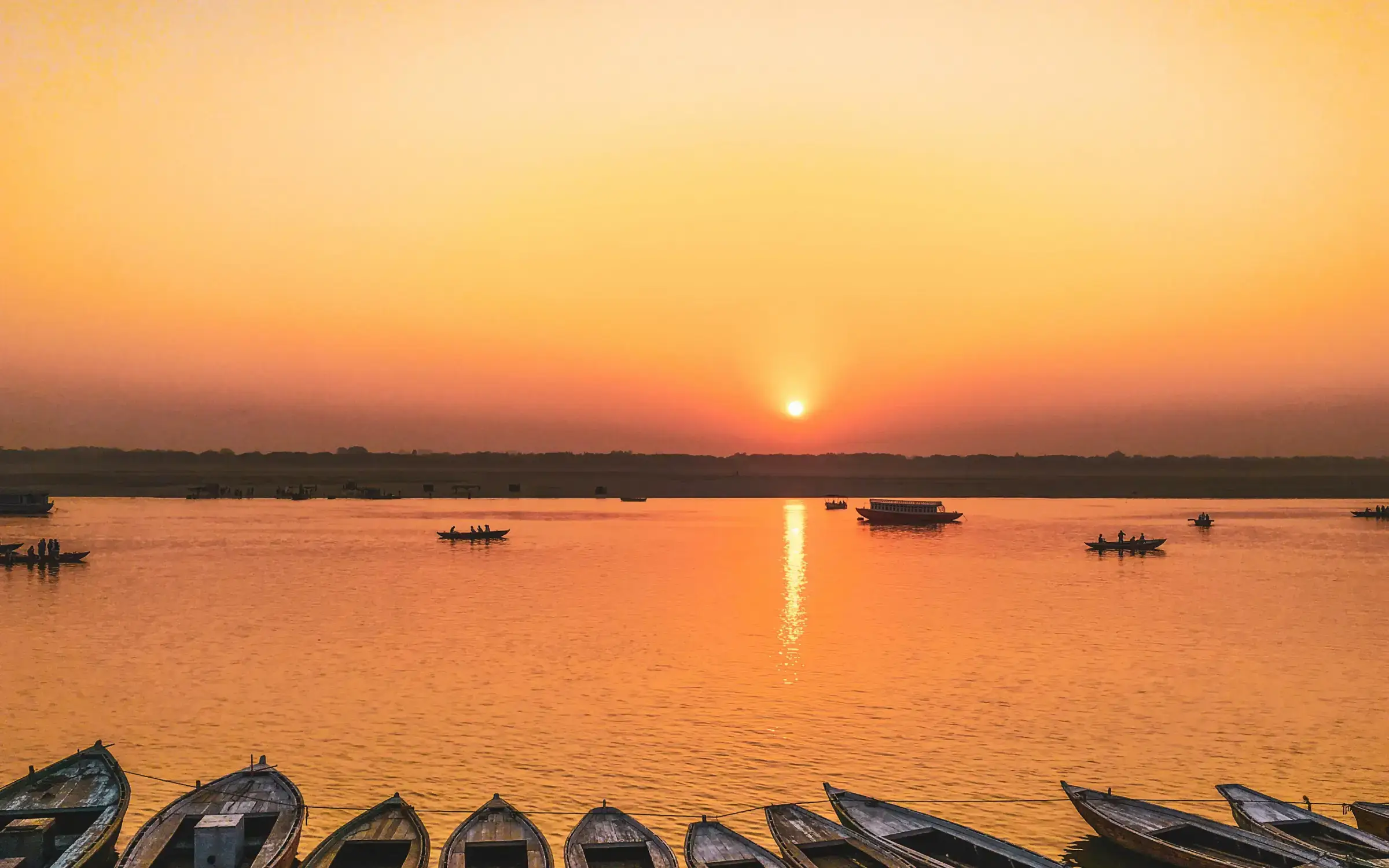
Varanasi, often referred to as the "Religious Capital of India", is among the most sacred Hindu cities in the world and has been one of the best Places in India known for religious tourism for centuries.
Also known as Kashi or Banaras among Indians, Varanasi maintains its position as one of Earth's oldest living cities. This sacred land sits along the eternal banks of the River Ganga where it holds a special position in Hinduism. According to legend Lord Shiva founded Varanasi as the gateway to salvation for all who are in search of spirituality.
The religious charm of Varanasi emerges from its profound understanding of life's connection to death. According to belief, those who die in Varanasi receive moksha (liberation from birth and death cycles) which transforms their passing into a spiritual celebration of their eternal soul. The Kashi Vishwanath Temple stands as a sacred shrine to Lord Shiva in Varanasi while also being one of the 12 Jyotirlingas which provides devotees with a deep spiritual connection. Also called the "Golden Temple," Kashi Vishwanath Temple has served as a spiritual landmark that attracts devotees from all walks of life. During Mahashivaratri the temple welcomes countless pilgrims who celebrate the occasion with both grandeur and deep religious respect.
The Ganga River's Ghats in Varanasi have become not just the city's but also the most famous holy places in India. The 80-kilometer stretch of ghats contains historical significance through their roles as cremation sites at Harishchandra and Manikarnika Ghats and Ganga Aarti ceremonies at Dashashwamedh and Assi Ghats. Buddhism also considers Varanasi sacred as Gautama Buddha preached his initial sermon at Sarnath, the edge of the city. The combination of sacred legends with numerous temples, narrow streets, quaint ghats, rituals, and the slow-paced lifestyle of Varanasi makes it one of the world's most important religious and spiritual destinations.
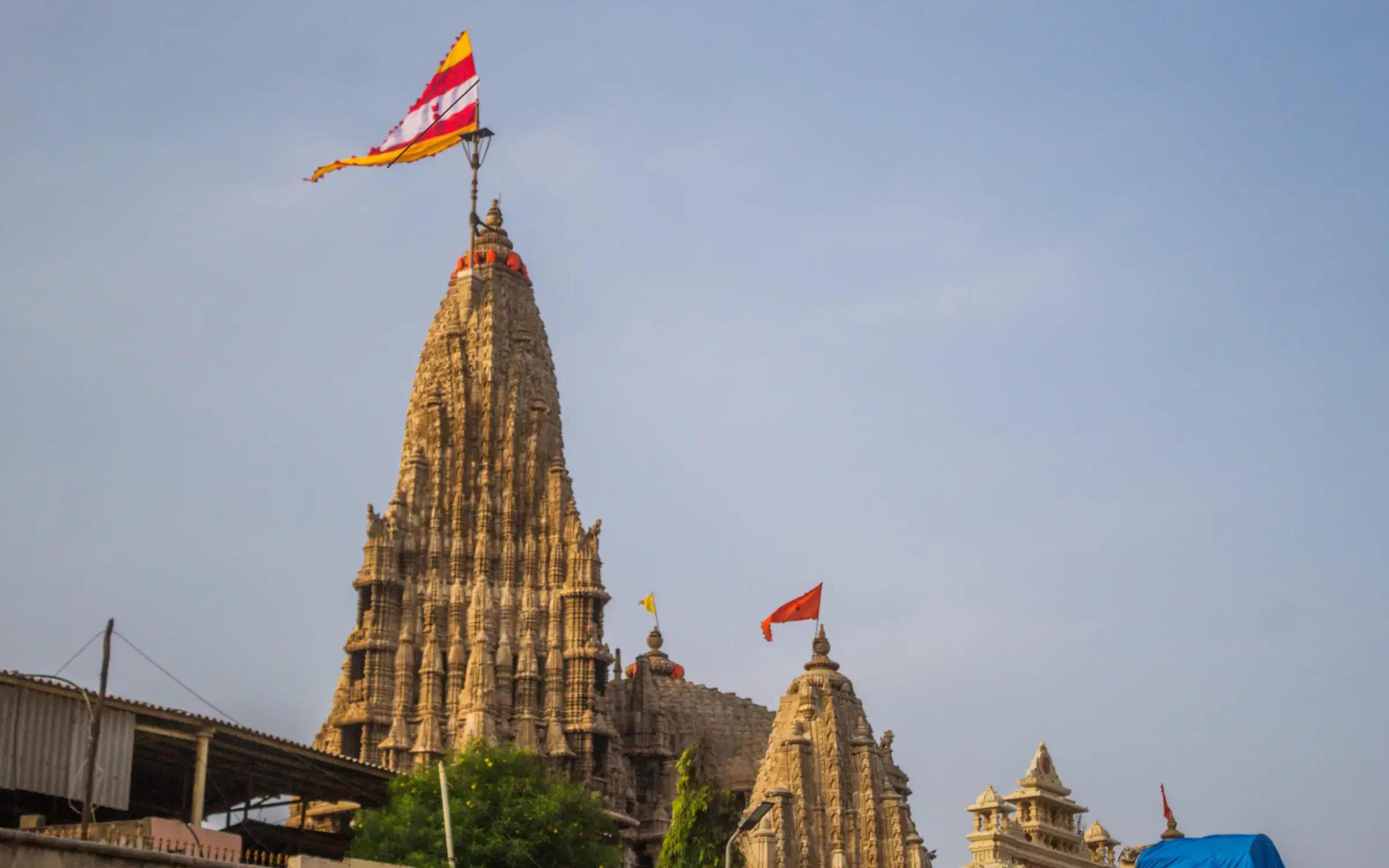
Dwarka, the city of Lord Krishna and one of the seven holiest pilgrimage sites of Hinduism called Sapta Puri is a fundamental religious tourism center in India. It served as Lord Krishna's royal domain and thousands of travelers including devotees visit Dwarka because of its divine atmosphere and historical significance.
The city's name "Dwarka" signifies "gateway to salvation" reflecting its sacred status. According to sacred scriptures, Lord Krishna chose Dwarka as his earthly residence following his departure from Mathura. With Vishwakarma the divine architect at his side, Lord Krishna constructed this golden city after extracting land from the Arabian Sea. Dwarka exists beyond mythological narratives because archaeological investigations have uncovered evidence such as ancient anchors and underwater structures which demonstrate its status as a prosperous maritime center.
The Dwarkadhish Temple, or Jagat Mandir, is the heart of Dwarka’s spiritual charm and one of the top religious places in India. The magnificent temple is believed to have been built by Vajranabha who was Lord Krishna's great-grandson about 2,500 years ago. The temple rises to 43 meters from its riverfront position at the Gomti River's meeting point with the Arabian Sea where a colorful flag dances against the blue sky. Worshippers undertake the 50-step climb to worship Lord Krishna represented in a pacifying black statue. Stories from Hindu mythology depicted on the temple's sophisticated carvings and magnificent architectural design create wonder in all visitors.
Dwarkadhish Temple stands as the main religious attraction in the city while Rukmini Devi Temple and Beyt Dwarka add to the sacred charm of the area. During the festivals of Janmashtami and Holi Dwarka becomes a vibrant center of devotion and celebration where residents express their religious fervor with unmatched enthusiasm. Dwarka's enduring legends and spiritual heritage attract visitors as a critical travel destination which provides both peace and wisdom to those who travel to this sacred territory.
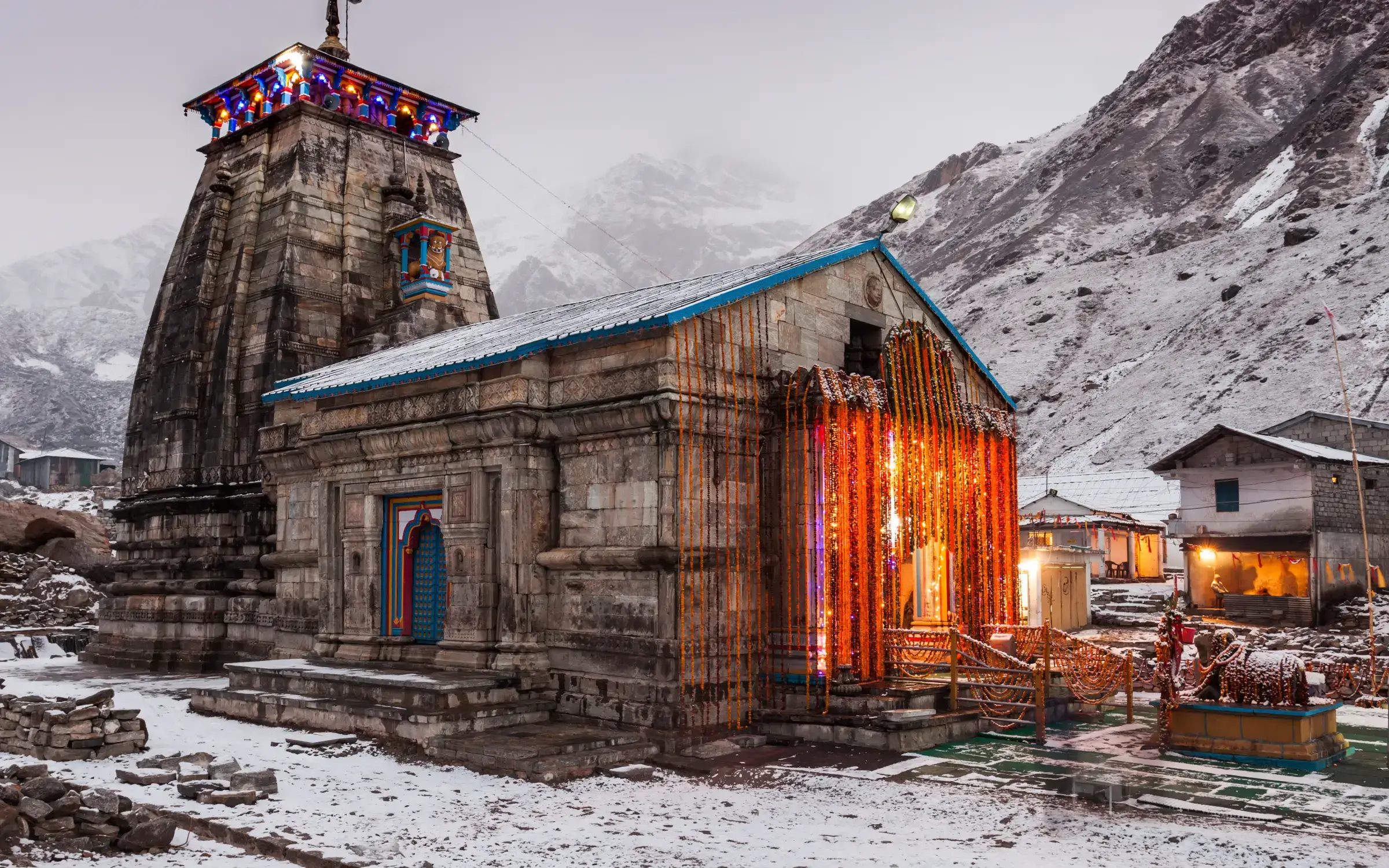
The sacred town of Kedarnath sits at 3584 meters in the rugged Garhwal Himalayas of Uttarakhand and is widely recognized as one of Hinduism's most sacred pilgrimage destinations. The sacred town is located beside the Mandakini River's source and stands as both a Char Dham Yatra base and a Jyotirlinga temple dedicated to Lord Shiva. Kedarnath stands out as an unmatched religious place in India for seekers because of its sacred temple and challenging mountain paths to reach here.
According to Hindu mythology, Kedarnath dates back to the time of the Mahabharata. Pandavas came here seeking Lord Shiva's forgiveness to do penance for their sins after the Kurukshetra war. From his hiding place Lord Shiva took the form of a bull to escape detection by using his hump to remain submerged underground. Still, Pandavas' unwavering dedication touched Shiva who decided to forgive them and make Kedarnath holy through his divine presence. The hump of Lord Shiva's bull form is worshipped at Kedarnath Temple while other parts of the bull are worshipped in four other temples in the Himalayas.
The Kedarnath Temple which Pandavas constructed later received restoration work from Adi Shankaracharya in the 8th century and continues to serve as a symbol of devotion and endurance. And at present is one of the most popular Hindu pilgrimage sites in India. The temple is within a mountain valley only accessible in summer while during winter submerged under snow. During the time period the temple is closed, Lord Shiva of Kedarnath is worshipped in the religious site of Ukhimath.
The region's deep religious passion emerges through Badri Kedar Utsav and Mahashivratri festivals which create lively celebrations with cultural shows uniting Kedarnath with vibrant spirituality. The challenging path to Kedarnath provides spiritual and natural wonders that draw pilgrims and peace seekers who should absolutely experience the journey.
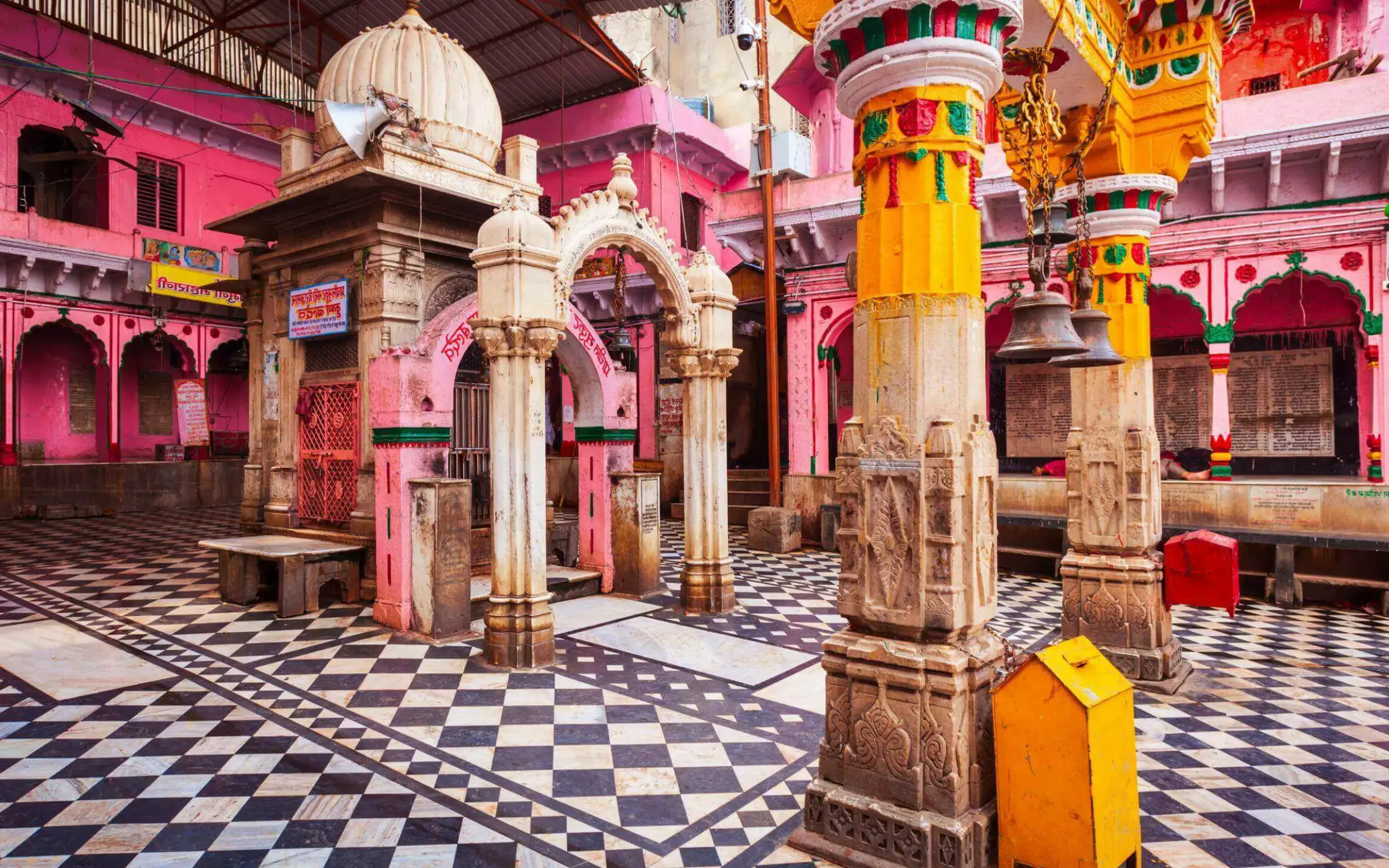
Charmed by the Yamuna River, Mathura is a revered city in the western Uttar Pradesh region which also is the birthplace of Lord Krishna, one of Hinduism’s most beloved deities. Mathura stands as a cornerstone of religious tourism in India as it is also one of the sapt puris—seven holy cities of Hinduism.
The Shri Krishna Janmasthan Temple stands as the spiritual center of Mathura as it is believed that it marks the exact spot of birthplace of Lord Krishna making it one of the best religious places to visit in India. Devotees unite at this temple complex to worship Lord Vishnu in his eighth incarnation. An architectural gem from 1814 stands as the Dwarkadhish Temple just across the way. Worshippers venerate Lord Krishna in his mature royal manifestation through his black marble sculpture which enchants all visitors at this site.
The holy importance of Mathura reaches further than its position within the Hindu faith. The site flourished as an artistic center of Buddhist, Jain, and Hindu religious traditions while under Mauryan and Kushan rule. Sculptures throughout the city hold the distinction of being India's best while displaying religious unity between multiple beliefs. Visitors can access this artistic legacy at the Government Museum which exhibits ancient artifacts alongside statues from these historical periods.
Visitors who want peace will find it at Vishram Ghat which provides an atmosphere of calmness. According to tradition Lord Krishna rested at this location after conquering the oppressive ruler, King Kamsa. Devotees' sacred chants echo throughout the ghat area that rests among temples creating a sanctuary of spiritual peace. The legendary Krishna-Radha stories take their most enchanting form at Kusum Sarovar where visitors can explore its peaceful natural setting. During festivals Janmashtami and Holi, Mathura transforms into a grand celebration of devotion through joyous celebrations. Tourists and pilgrims flock to see the grand Janmashtami festivities and the vibrant Lathmar Holi ceremony in Barsana which present a vivid display of Mathura's energetic cultural heritage.

Badrinath, the sacred Himalayan town at an altitude of 3,300 meters, holds a lot of significance in the religious tours in India. Located on the banks of the Alaknanda River, Badrinath is one of the revered Char Dham pilgrimage sites and holds immense importance in Hinduism. The holy town combines divinity with natural wonders and historical stories while maintaining the serenity that draws worldwide devotees and explorers.
The Badrinath Temple stands as the primary attraction of this town as it worships Lord Vishnu as Badri Vishal. According to Hindu mythology, this sacred location served as the meditation spot of Lord Vishnu, and his consort, Goddess Lakshmi, transformed into a Badri tree to safeguard him during Himalayan winters. The temple in Badrinath was founded during the 9th century by Adi Shankaracharya. Built in traditional Garhwali stone craftsmanship and woodwork, this temple honors both the architecture and religious heritage of the region.
Beyond its holy shrine, Badrinath presents a deeper spiritual meaning. Tapt Kund functions as a natural hot spring that believers use to cleanse their sins and achieve spiritual purification. Steeped in religious significance are two additional sites: Charanpaduka with the footprints of Lord Vishnu on rocks and Narad Kund which was the source of the temple's sacred statue recovered.
During both the Badri-Kedar Utsav and the Janmashtami celebrations Badrinath creates a powerful spiritual environment that draws worshippers for devoted festivals.
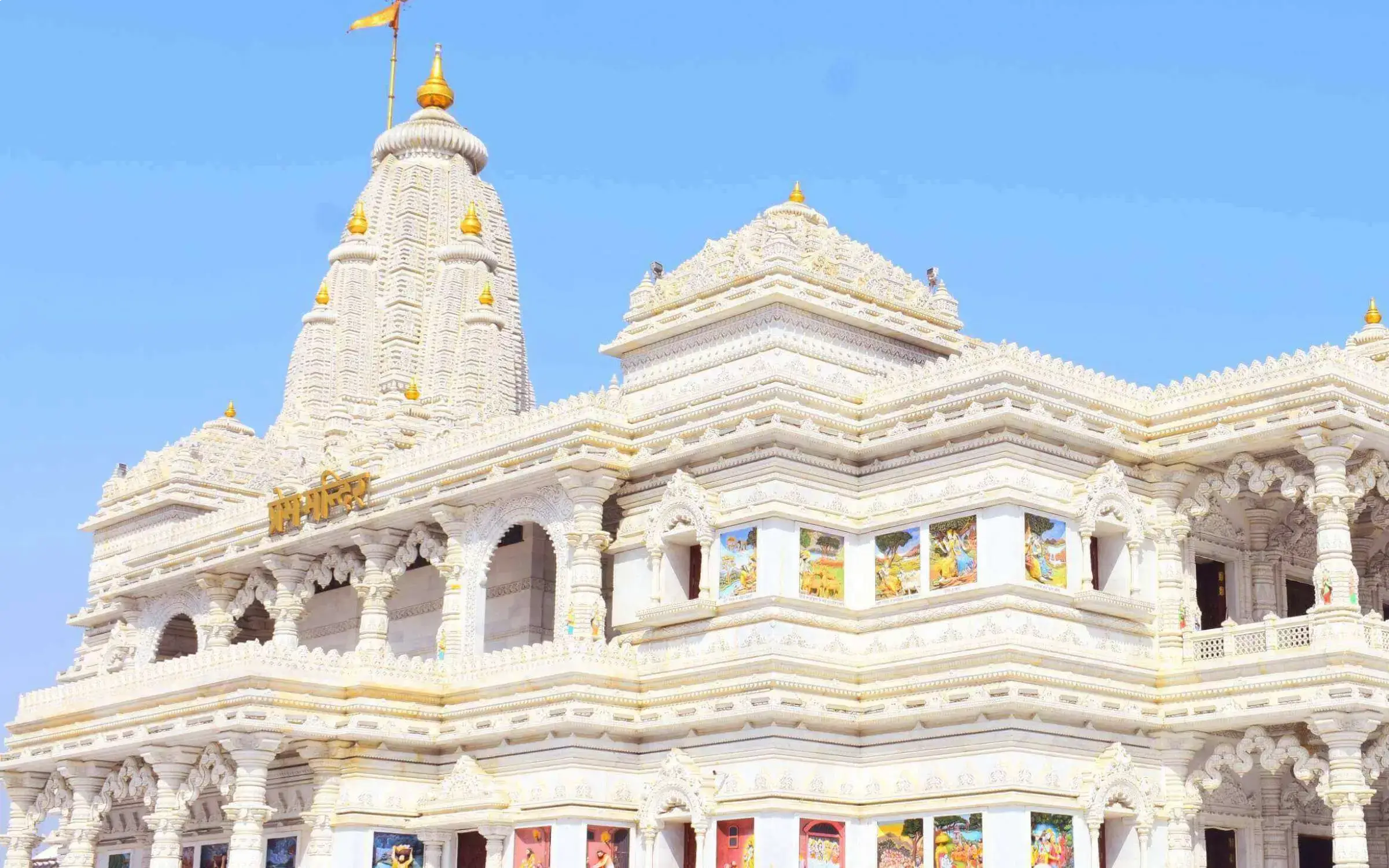
The place where Lord Krishna spent his childhood, Vrindavan is a popular religious site brimming with rhythmic chants and ever-present love. Vrindavan earns its status as a sacred Indian pilgrimage and an exceptionally revered place for devotees who worship Lord Krishna. On the banks of River Yamuna, the city is where Lord Krishna was brought just after he was born in Mathura. According to Hindu mythologies, Lord Krishna performed many miracles during his childhood while in Vrindavan.
Vrindavan gained its name from the historical forest (Van) which teemed with Vrinda (Tulsi) plants (holy basil). Through numerous temples, Vrindavan maintains the essence of Krishna's divine playground where he plays with Radha and the gopis (milkmaids). The town regained its spiritual importance with the help of Chaitanya Mahaprabhu who rediscovered Vrindavan during the 16th century. Now this historically energetic town welcomes both devotees of Lord Krishna and followers of Vaishnavism.
Every traveler in Vrindavan must experience the Banke Bihari Temple, which shows Lord Krishna in his Tribhanga posture ("bent in three places") while maintaining an atmosphere of peaceful devotion. The Prem Mandir stands as an architectural masterpiece featuring intricate designs of Krishna's life that come to life through its musical fountain show.
Two prominent temples in Vrindavan, demonstrate distinct Indian architectural characteristics, The ISKCON Temple and the Govind Dev Temple. ISCKON functions as a spiritual hub for global Krishna followers and the 1590 built Govind Dev Temple combines Mughal and Hindu elements in its construction. Devotees believe that every night Lord Krishna and Radha dance the eternal Raas Leela in Nidhivan. Many people have reported sound coming through Nidhivan at night. Vrindavan is also known for its massive celebrations of religious festivals. Janmashtami, Radhashtami, and Holi generate so intense devotion that people flock to Vrindavan from all around the world.
All these popular religious sites are visited by millions of devotees not only from India but also from around the sphere who wish to search for a meaningful life. Every place on this list of best religious places to visit in India holds unique aspects that subjugate the minds and souls of the visitors and introduce them to their true selves.
Get up to 30% early bird discount on Char Dham Yatra Tour Packages for 2025 bookings.
Explore various options for Ek Dham Yatra tour packages as well as Badrinath, Kedarnath, Gangotri, and Yamunotri Dham tour packages
Explore other important and informative travel and tourism links related to the Char Dham Yatra in the Himalayas.